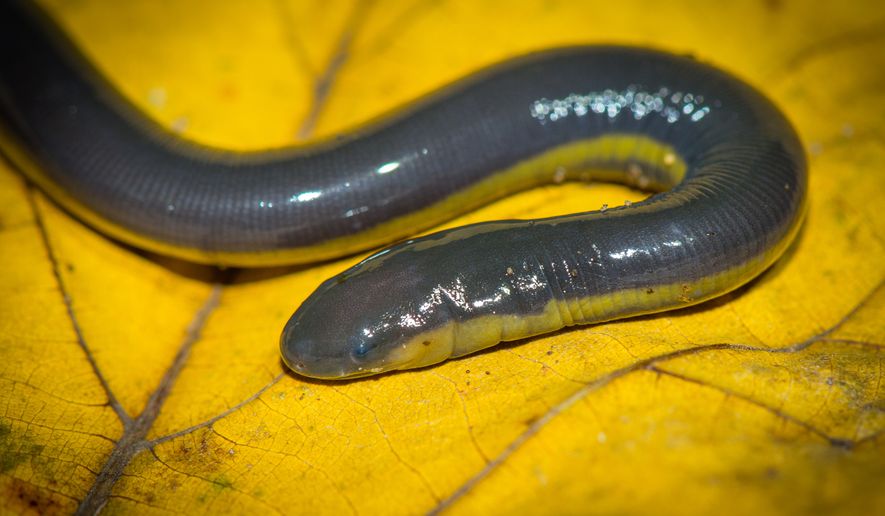A new species of fossilized caecilian, a worm-like amphibian, has been found in Arizona’s Petrified Forest National Park.
The species was named Funcusvermis gilmorei, after the Ohio Players’ 1972 song “Funky Worm.”
Dating 220 million back to the Triassic period, Funcusvermis is the oldest type of caecilian ever discovered. It is so old, in fact, that it has legs, where modern caecilians are limbless, looking like worms and snakes.
The first bones of the species were unearthed in 2019; as of Wednesday, when the National Park Service announced the new species, more than 76 lower jaws have been collected, along with an upper jaw, vertebrae and thigh bone.
In the Triassic, the area of Petrified Forest National Park where the bones were found was a pond or lake within a hot, humid forest, ideal conditions for preserving Funcusvermis remains. Caecilian fossils are not a common find for paleontologists.
“Fossil caecilians are extraordinarily rare and they are found accidentally when paleontologists are searching for the fossils of other more common animals,” Ben Kligman, lead author on the paper in the journal Nature that announced the species’ existence, said in a news release from Virginia Tech, where he is a doctoral student.
A particular dental feature tipped off the paleontologists that they had discovered the world’s oldest caecilian fossil.
“Seeing the first jaw under the microscope — with its distinctive double row of teeth — sent chills down my back. We immediately knew it was a caecilian — the oldest caecilian fossil ever found — and a once-in-a-lifetime discovery,” Mr. Kligman said.
The fossil was not the first Triassic period discovery Mr. Kligman had made at Petrified Forest National Park. In 2019, he discovered the first remains of a rat-like mammalian precursor, which was then named Kataigidodon venetus.
The genus name for the fossil was inspired by the Ohio Players’ tune “Funky Worm”, which was played often by the paleontologists of the national park while looking through the Thunderstorm Ridge bonebed.
“While we’re out there in the desert digging, it’s 100 degrees and the sun is beating down. It’s nice to have a speaker with some music playing to keep you motivated while you’re scratching away in the dirt all day long. Back in 2017 and 2018, we were really getting into ‘70s funk music. We were listening to ‘Funky Worm,’” Mr. Kligman told the Dayton Daily News.
The Ohio Players were honored at the use of the song for the fossil.
“We compare in age to the fossil so he’s part of our brotherhood. We’re dinosaur age compared to kids today. Seriously, though, it’s amazing any time you are part of something as important as this will be. This fossil will last longer than ‘Funky Worm’ and already has by comparison,” the band’s drummer, James “Diamond” Williams, told the Dayton Daily News.
The species name honors Drexel University Academy of Natural Sciences Collections Manager Ned Gilmore. Mr. Kligman volunteered to work with Mr. Gilmore’s herpetology collection as an undergraduate student.
“He was an important mentor who helped inspire my interest in fossils and amphibians,” Mr. Kligman said.
• Brad Matthews can be reached at bmatthews@washingtontimes.com.




Please read our comment policy before commenting.